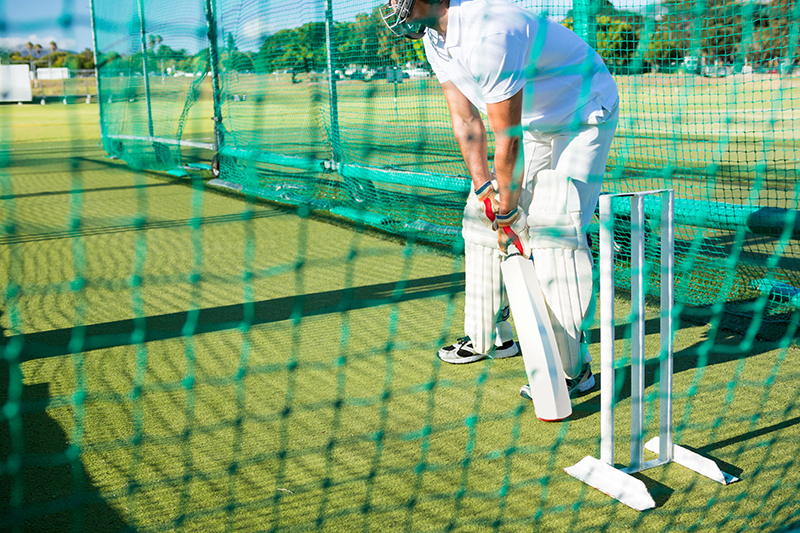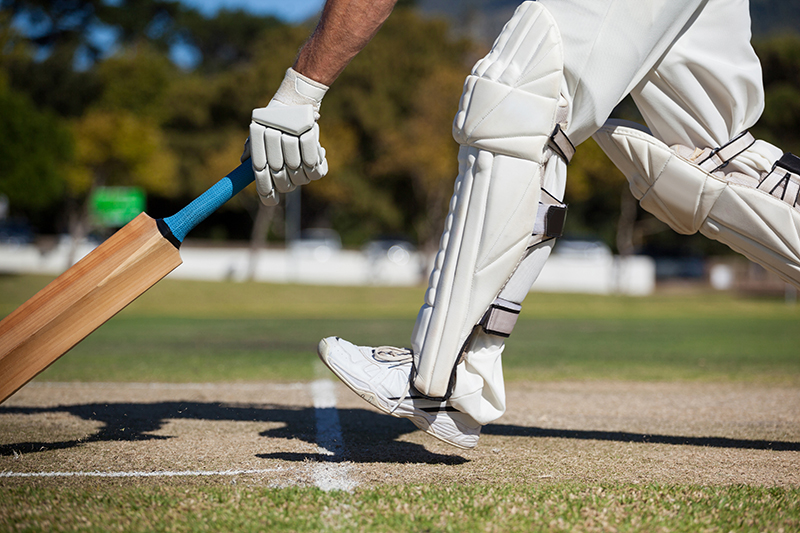Last Updated on: 11th October 2024, 11:24 am
Pre-Season Cricket Training
Cricket Fitness Plan
No matter how good a player is, their fitness, strength and skills will decline during the off-season. That’s why pre-season cricket training is so important for all players. Before your put on your cricket whites for the first time, you want to build a solid foundation for the season ahead. Getting stronger and more flexible will reduce your risk of injury. You want to be in the best position to deal with the demands of a cricket match and give an optimal performance on the field.
Why Pre-Season Cricket Training Matters
Pre-season training lays the foundation for success during the cricket season by addressing several key areas:
- Enhancing Fitness: improve your general fitness after the downtime. Make sure you focus on strength, endurance, agility and flexibility. These are essential for success in the season ahead.
- Developing Skills: hone your cricket skills. Include drills that help refine your technique and try out new things. It’s a great time to get feedback from coaches and teammates.
- Injury Prevention: preparing your body to ensure it’s ready for the season ahead will reduce your risk of injury. Proper warm-ups are essential for looking after your body. Strength training and flexibility exercises help prevent common cricket injuries.
- Mental Preparation: it’s not just your body that needs to be ready. Set goals for what you want to achieve so you’re mentally prepared. Take part in practice matches to prepare for game conditions.
Target each of these in your pre-season training and you’ll start the new season on a strong footing.
Diet
Obviously, diet is an important part of pre-season training. What you eat and when can impact your energy levels and recovery time. The better your diet, the better your pre-season training will go. Aim to consume nutrient-rich foods like whole grains, fruit, vegetables, dairy, lean protein or vegetarian alternatives.
Carbohydrates will provide energy and should be eaten before high-intensity sessions. High-protein foods should be consumed before and after lower-intensity sessions and to maximise muscle recovery and growth. Hydration is also important so match your fluid intake with that lost through sweat.
Focus Areas for Cricketers
If a cricket player wants to perform effectively, they need skills and a high level of fitness. A great player will need:
- Good balance
- Core Strength
- Speed
- Power
- Endurance
To ensure they’re performing at the top level, cricketers should follow a strength and conditioning programme that’s tailored to them. It will prepare the body to deal with in-game scenarios and reduce the chance of injury.
 Strength and Interval Training
Strength and Interval Training
Your pre-season training plan should include a combination of strength and interval training. The exercises should emulate the movements that occur on the cricket field, so you’ll be prepared for the season.
Strength Training
Carry out strength training 2-4 times a week. Cricketers should focus on multi-joint exercises, explosive movements and progressive overload.
- Multi-joint exercises: target several muscles at the same time, e.g. bench press, deadlifts, squats, planks, and rowing.
- Explosive movements: use lower weights with a fast controlled movement, e.g. kettlebell swings, box jumps, ball throws and short sprints.
- Progressive overload: gradually increase the reps, sets or weight.
Interval Training
Aim to carry out interval training 1-3 times a week. You’ll build your fitness level faster than with cardio and it will help your metabolism speed up. It also helps replicate the stop-and-start nature of a cricket game.
Interval training involves periods of high-intensity training that are quickly followed by periods of lower intensity or rest. You should repeat this pattern for between 10-45 minutes. For example, sprint a certain distance or for a specific time. Then rest before sprinting again.
Pre-Season Cricket Training
To make the most of your pre-season training, break the weeks into different phases. This will help you focus and ensure that your body is ready for the demands of the cricket field.
 Phase 1: Building a base
Phase 1: Building a base
You’ll be coming back from a break and will most likely have been inactive during your time off. This means your first aim will be to get back into regular training. You want to build up a base level of fitness for your next few weeks of training.
Focus on building stamina and making steady improvements, so take it as easy as you want. For example, start by just walking a little more every day. Or do some cycling, running or circuits at the gym.
This isn’t the time to be focused on cricket-specific skills. You’re just trying to prepare your body for the next few weeks of training. If you want, you can start lifting weights but nothing too strenuous. Only allow yourself 1-2 sessions a week and don’t overdo it.
Phase 2: Skills
Once you have a broad level of fitness, you can start to include more specific exercises and skills training. You should start to gradually intensify your training and start pushing yourself. Make your cardio more challenging and start lifting heavier weights.
Start to include skills exercises and cricket games. Think back to last season and pick out some weaknesses. These are the areas you really want to focus on so you can start the season strong. This phase should be personalised to suit your needs.
Phase 3: Conditioning
The last few weeks before the season starts are crucial. Don’t push yourself too far because you don’t want to risk injury. However, you don’t need to stop training. You can gradually cut back to give your body time to repair. Don’t forget to rest and make sure you’re getting plenty of sleep.
You can still carry out higher-intensity workouts but make sure you aren’t going beyond what your body can cope with. This is also a great time to focus on cricket skills. Hold practice matches so the team can get used to working together again.
Example Pre-Season Cricket Training Plan (Phase 2 and 3)
- Day 1: Upper body strength training – e.g. overhead presses, landmine press, bicep curls, bent over rows
- Day 2: Cardio – e.g. long-distance run
- Day 3: Rest
- Day 4: Lower body strength training – e.g. single leg squat, single leg hip lift, front squat, deadlifts
Day 5: Cardio – e.g. interval training - Day 6: Cricket skills session
- Day 7: Rest
Get Ready For The Season
Cricket players must get their pre-season training sorted if they want to thrive in the upcoming season. You need to focus on fitness, skill development, injury prevention and mental preparation if you want to offer the best performance on the field.
Make the most out of your training by getting a new training kit. Browse our range of training wear and elevate your training this year. Grab some of our compression training tops and training bottoms. Or a trusty pair of shorts and a training t-shirt. We have plenty of options available.
Pendle Recommendations
Tags: Cricket, cricket coaching, cricket drills, cricket exercises, cricket pre-season training, cricket training, cricket training drills






